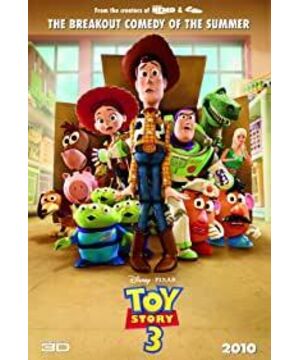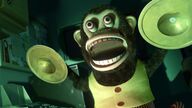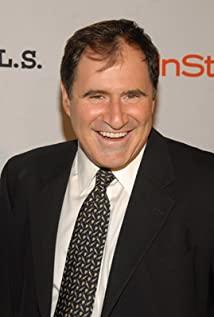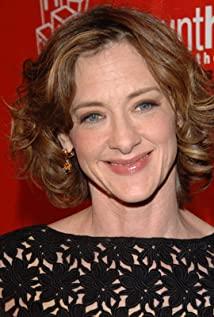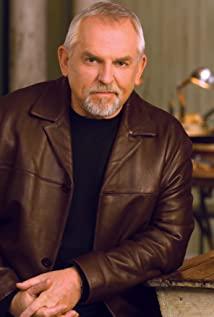(The part about the third part can be directly turned to the end)
I have hardly ever had a toy. Or maybe I'm heartless enough to throw all my memories behind me.
Building relationships with people is hard enough, and building emotional relationships with things is almost impossible for me. After the countless goldfish and a rabbit I had raised died, two puppies gave away and almost bit me one day, it should be said that except for the living people around me, I can only imagine Some images generate emotions. Nothing else.
This is probably the reason why I like watching movies and TV dramas. When emotions are overflowing and bodies are scarce, they have provided a lot of help for me to construct images in my mind to love.
I can't even fall in love with any living actor, because as long as she's alive, the image of her in my head isn't completely under my control.
A bit off topic, but I need to explain a little bit where my perspective on Toy Story comes from.
Looking at the comments, many people sighed that the Toy Story series realized their childhood fantasies, giving toys life and unswerving love for their owners.
So although this is a movie with a toy as the protagonist, most of the audience is still watching it from a human perspective. They see themselves as the little boy in the film, the owner of the toys, moved by the love the toys have for them, inspired by the wonderful performances of Cowboy Woody and Buzz Lightyear. It's normal, maybe it should be.
But I can't, I've never been a toy owner. So I can only bring myself into the perspective of toys. So I cannot understand or accept this cursed, fatalistic love: "Whoever buys you, he becomes your master, your life's worth is to make him happy, and you stay with him until you are abandoned , even after being abandoned, he will spend the rest of his life thinking about him, waiting for an opportunity to be used and played with by his children."
It seems like Stockholm and PUA.
Of course, I quickly realized it was my own problem.
After all, imagining a toy loving its owner is as normal as imagining a pet loving its owner. I can't understand the former, but I still have faith in the latter. Although I still feel that there is some inherent human arrogance in these two ideas. But even in 2016's Pet Confidential, we still felt that only a small number of animals abandoned by their owners would resist this kind of intimacy with humans, and I shouldn't have a higher opinion of such an ancient animated film request.
Therefore, although I think the theme of Toy Story, the most ideal development method is to dig from three dimensions, the story between toys, the story on the owner and the relationship between toys and people. But while watching the first two, I let go of the third dimension.
The best thing about the first two Toy Stories, in my opinion, is the excellent drawing for their era, and a series of very sophisticated and intricate action sequences designed for the toys. These action sequences include, but are not limited to, the soldiers going downstairs to scout in the first part, the revenge of the dilapidated toys against A Xue in the climax, the other toys in the second part going up to the 23rd floor to rescue Woody, the end of the conveyor belt chase scene, and Every time Andy played role-playing with toys, every time the toys moved or escaped covertly in various places... Too many, let alone in an animated movie, the whole movie really doesn't lose the action blockbuster.
Of course, the interesting imagination of various toys and their characters, abilities, and behaviors, from the design of each character, to the late-night party of Barbie dolls in the toy store, are all worthy of praise.
In addition, the horror atmosphere of Axue's room in the first part should be unique in Pixar's works.
Back to topic. Through human children, the first one recalls childhood, and it can be regarded as an education for children to cherish their own belongings. The two books do not dig deeply into the story of children.
The first two stories told through toys point to very simple friendship, self-positioning and self-realization. Overall, the degree of completion is very high, but the first part is far better than the second part. In the first part, Cowboy Woody accepted his old age, and once hoped to hand over the task and responsibility of accompanying Andy to Buzz Lightyear; but Buzz Lightyear faced the fact that he was actually a toy and gave up the guardianship. The obsession of space has accepted the new value pursuit of giving a child happiness. The theme of the second part is even more brutal, denying the prospect of a decadent life in a museum, making cowboy Woody and Miss Triss firmly believe that the value pursuit of a toy is to accompany human children after several doubts.
The second part is actually somewhat flawed in the expression of the theme, which is mainly reflected in two aspects.
One is that although Buzz Lightyear accepted the fact that he was a toy in the first part, when faced with two rows of similar toys in the supermarket, the sense of shock and the self-doubt that may arise from it should be even greater. dig space. The second is that the film did not solve a fundamental problem. It stayed in the museum and provided shock and joy to children of all ages. Why would it be better to accompany Andy, a specific individual.
The flaws in the theme, in turn, act on the characterization. In the first part, Woody and Buzz Lightyear are both protagonists, and they each contribute a part of the theme expression, and the character arcs of the two characters are very complete. But in the second part, Buzz Lightyear is more like an indispensable tool when rescuing Woody; and throughout the three parts, Woody has always been firmly in love with Andy, a specific individual. The fate of being sent to the museum was once recognized in the second part, but it actually detracted from his character arc.
Different from the first two, the third really gave me a great shock and moving.
It retains and develops the advantages of the first two parts. The design of the action scene of escaping from kindergarten is perfect, it is the perfect combination of action and imagination; for the presentation of the dark power structure in the kindergarten and the presentation of the villain's past, the horror is like the Axue room in the first part; and the Barbie mansion And the Spanish model Buzz Lightyear is really a peak-level imagination, not fancy, it is extended on the theme of toys, a natural and vivid and interesting imagination.
And the film finally made a huge breakthrough in the theme. Instead of dividing toys, people, toys and people as I thought at the beginning, the three are integrated to tell a sincere story about love and innocence.
I finally saw a rebel character in this film. The villain, an amiable-looking, strawberry-flavored teddy bear. After being accidentally abandoned, he began to blacken, hated humans, became the kindergarten's power controller, and created a sickly dark power system. The new ones are sent to torture the younger children, and the senior and loyal toys enjoy the blessings of the place across the door.
I suddenly discovered that this is what I longed to see in the first two films, awakening, rebellion, freedom... It is no longer a toy for human children, and even in turn uses human children as the cornerstone of their own power. As children grow up, they lose their innocence, forget their toys, and without their toys, they also lose their sincerity and kindness. Curses are never just for toys, but for children.
My empathy for toys comes from imagining myself as some kind of God-created, ornamental or toy pet. Although I won't be stuck in this idea all the time, every time I bring this idea back to my mind because of a certain film and television work or some setbacks in life, I probably feel the same as that doll bear. Nothing in this world is worth loving. To be free is to be unfettered, unfettered, and loved.
At the end of the film, Andy gave the toys to a little girl who cherishes toys. He gave a long introduction, introducing each of the toys in the box and their imaginary personalities. You suddenly realize that he remembers every toy and every past.
I suddenly found that this is what I want. I'm not really expecting the toys to never love their owners again, I just hope the movie will give me a little proof that their love is worth it and their owners are worth being loved by them.
Awakening, rebellion, freedom, so tired. Maybe there are so many people chasing stars and being PUA, just because being a person who loves with heart and lungs without asking for anything in return can give life a little more meaning. We do need others to confirm our existence. At this time, instead of calling for no more love, I wish everyone, whether it is a toy or a human, can meet a person who is truly worthy of our love.
This is Triss, the toughest cowgirl in the West. She loves animals, but she loves hearts, her best mate.
This is Hugosaurus, the most vicious and terrifying dinosaur in history.
This is Mr. Egghead and Mrs. Egghead, don't break them up because they love each other.
Spring Dogs are as loyal as all dogs.
As for the ham, he'll be bullish on your money. But he's also the worst villain of all time, Dr. Evil Pork Chop.
These little guys are from a strange planet - Pizza Planet.
And this, he's Buzz Lightyear, the coolest toy. See, he can fly and shoot lasers, and he vows to defeat the evil emperor Zak.
Woody has been my best friend for as long as I can remember. He was brave, kind and smart like a cowboy. But Woody is special because he will never give up on you, never. No matter what, he is your backbone.
I want you to promise to take good care of these guys, they... mean a lot to me.
Judging from the story of human beings, Andy really bid farewell to childhood and went to college, a new journey. His innocence and happiness were passed on to the little girl instead of disappearing; from the story of toys, toys found a new home. , they can continue to accompany a child to grow up, and there may be many more; from the perspective of the emotional relationship and mapping between toys and human beings, I think this film is actually talking about, go love, there will always be someone worth it.
Finally, I want to say that the Toy Story series is really different. Only in the sense of the times, it reflects the leadership and advancement of Pixar's painting and production level. But more importantly, the themes of the three parts are in the same line, pointing to the self-positioning and value realization of the toys, and also rendering the friendship and some kind of family between them; the characters complement each other, just like Andy said, Woody will never give up on him. After the three films, this eternal feeling is as heavy as an actual vein, connecting the entire series, while the image of Buzz Lightyear's three films shows a kind of change and development. From the rigidity at the beginning, to the stability of the second part, it is worth relying on, but it also scorns other similar toys, and then to the wild and romantic Spanish mode of the third part...
The three works truly form an organic whole, complementing each other, inheriting and developing. Except for those original books or original works that are a series, which I have never seen in other series of movies, but who would refuse to make a series like this?
Andy's departure almost brought an end to the story so far. Hopefully Toy Story 4 doesn't disappoint me.
View more about Toy Story 3 reviews


